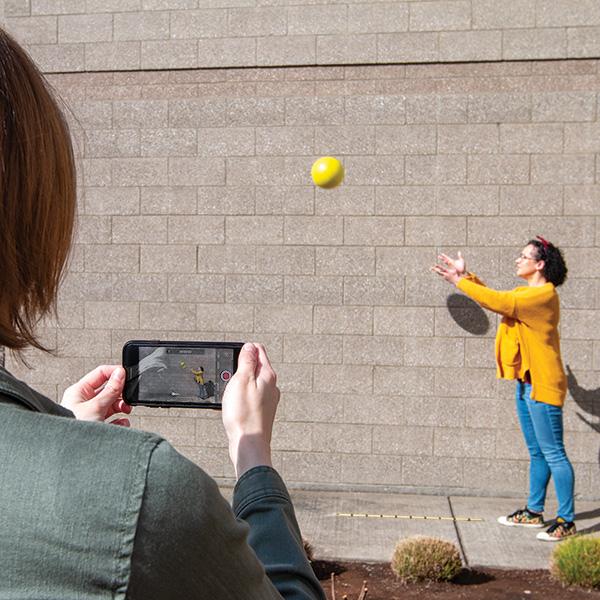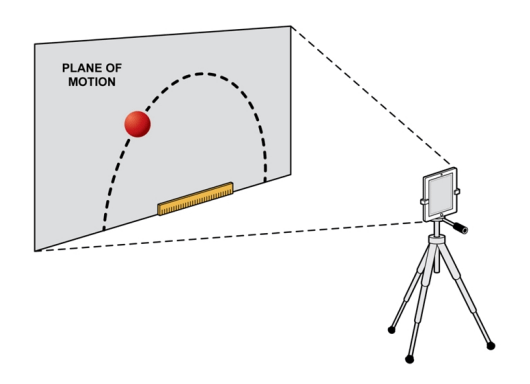
Sharing ideas and inspiration for engagement, inclusion, and excellence in STEM

Motion is an important concept that can be challenging for students to comprehend. However, Vernier Video Analysis makes studying motion easy and accessible.
This app allows students to use videos they record with their mobile devices (as well as prepared or found videos) to measure types of motion that they can’t with a sensor, such as projectile motion and two-dimensional collisions.
Thanks to this capability, Vernier Video Analysis expands what students can measure and analyze; they can go beyond the classroom and into the real world. It also lets students investigate topics that interest them, such as sports or dance.
To get the most out of Vernier Video Analysis, it’s important to collect high-quality video. Based on my experience working with the app and providing guidance to educators on the best ways to capture video, here are five tips that can set you up for success.
1. Ensure You Have Good Lighting
If you can, record your video in a well-lit area. The ideal environment is outdoors in daylight; even an overcast sky can provide more light than can be found indoors. When it’s not possible or practical to go outside, try using old overhead projectors. They can provide a bright light that has no flicker, even when you’re filming in high-speed mode. The brighter the lighting, the less motion blur you will see in the video.
2. Aim the Camera Directly at the Motion
Think of your camera as a flat surface that is aimed directly at the motion—which is in a flat plane that’s perpendicular to the camera. Put another way, point the camera so that its view is normal to the plane of the motion.

3. Have a Scale Object
Place a scale object—such as a ruler or meter stick—in the same plane as the motion being recorded and make sure it is clearly visible in the scene. Having the scale object at the same distance from the camera as the motion eliminates parallax error when applying a scale in the app. Remember: The larger or longer the scale object, the more accurate the scale.
4. Mark Extended Objects
When your video features an extended object, such as a person, you likely don’t want to look at the movement of the entire object. Take, for instance, a person doing a bicep curl. To increase visibility and focus on the motion, you could put brightly colored stickers or reflective tape on the person’s arm. You could also stick Ping-Pong balls to the person doing the motion—which might be the most entertaining option for students since it evokes motion-capture technology used in movies.
5. Use Telephoto Mode
Whenever possible, put the device taking the video in telephoto mode because it will flatten the scene. Plus, if your scale is a little bit off in terms of its positioning, telephoto mode will help. Another benefit: There will be less scale difference between the center of the frame and the edges. For example, imagine that your camera is at ground level and that you’re dropping a ball from the roof of a building. Due to geometry, when the ball is at ground level, it’s closer to the camera than when it’s on the roof, so the scale changes as the ball falls. By using telephoto mode, you’re making that difference less dramatic, so your earliest position values are going to be closer to reality.
Looking for more best practices? Check out A New View on Physics: Using Video Analysis to Boost Student Engagement. In this webinar, we help you set your students up for success with Vernier Video Analysis by providing some essential tips for capturing great video with smartphones. We discuss phone camera settings, as well as lighting and composition considerations, and we also explore an example from our newest physics e-book, Vernier Video Analysis: Conservation Laws and Forces.
Share this Article

Sign up for our newsletter
Stay in the loop! Beyond Measure delivers monthly updates on the latest news, ideas, and STEM resources from Vernier.






